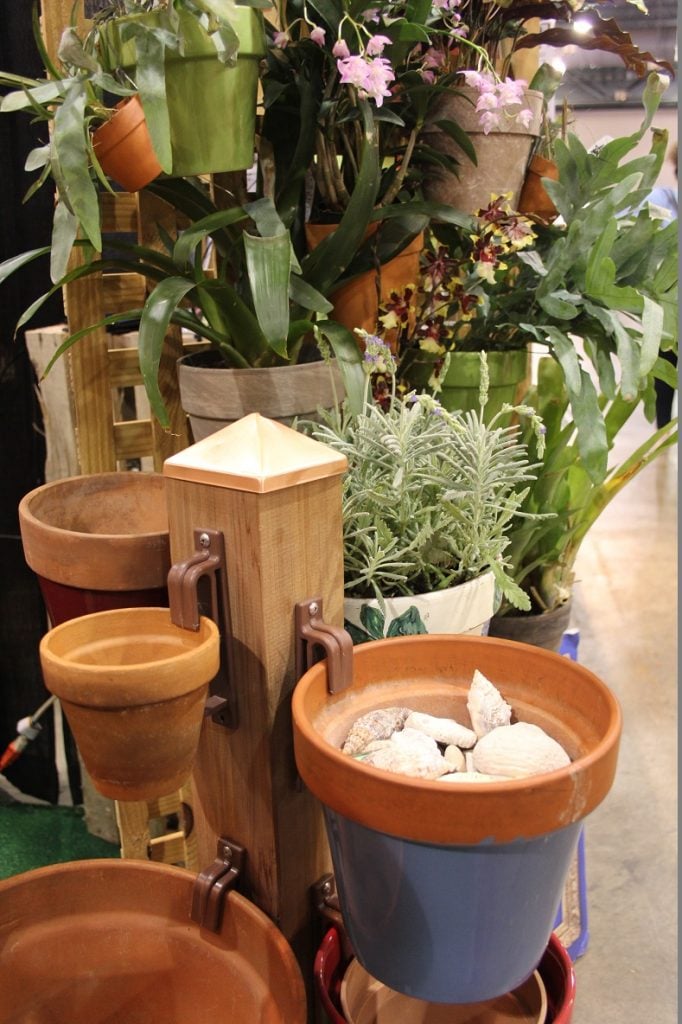
As a greenhouse owner, you can easily make your own hanging baskets rather than buying them at a nursery. If you start your basket plantings in late winter, they’ll be large, lush, and ready to put outdoors after Jack Frost has quit for the season.
I prefer very large, 20”-diameter, peat-lined containers for my hanging baskets. There are two reasons for this. First, these baskets hold lots of plants, which is especially nice for mixed cultures, but even with a single variety, they allow for very large growth. Second, large, peat-lined baskets don’t dry out as quickly as do smaller baskets or baskets made of other materials.
When planting your baskets, make sure the potting soil is moist, but not excessively wet and heavy. Keep the soil an inch or so below the basket’s top. This will prevent added water from running off the surface rather than penetrating the soil. To help retain water, I put a foil pie plate on the bottom of each basket before filling it with potting soil. Another trick for keeping the soil moist is to add to it some water-retaining granules, which can be purchased at any garden store.
Here are some other guidelines for making hanging baskets:
- Small baskets generally look better with only one or two plant varieties in them, whereas larger baskets can accommodate many more varieties.
- Use lots of plants. Professionals use at least three fuchsias in an 8”-diameter pot. If you’re using 8” or 10” baskets, at least three and up to five plants per basket are not too many. For each of my 20”-diameter baskets, I may use up to ten plants to get a profusion of color, but more often I use seven or eight plants per basket depending on each plant’s final size.
- In a large basket, group plant varieties together for best effect.
- Choose harmonious flower colors, such as opposite or adjacent ones on the color wheel.
- Put the tallest, most upright plants in the basket’s center and let hanging varieties trail over the sides.
- Add slow-release fertilizer to the potting soil when filling your baskets, or feed the plants weekly with a high-phosphorus fertilizer to promote flowering.
- Check the sturdiness of the structure from which each basket is to hang. Make sure that the basket, when full and recently watered, won’t be too heavy for its location.
Some Plants for Hanging Baskets or Containers
Herbs
- Mint (but be warned, it is highly invasive and may choke out other plants)
- Basil
- Chives
- Parsley
- Rosemary
- Nasturtiums
Vegetables/Fruits
- Strawberries
- Cherry tomatoes
- Lettuce
Flowers
- Pendulous begonias
- Lobelia
- Brachycome iberdifolia (Swan River Daisy)
- Impatiens
- Ivy geraniums
- Verbena
- Portulacas
- Fuchsias
- Felicia amelloides (Blue Marguerites)
- Nasturtiums
- Pansies
- Petunias
- Lotus berthelotii
- Some primulas
- Spring bulbs (keep bulbs outside for winter and bring indoors in early spring to force)
Shade-loving options
- Fuchsias
- Mimulus
- Ivy
- Heathers
Indoor options
- Coleus
- Spider plants
- Fuchsias
- Trailing succulents (for those with thorns, wrap in newspaper before handling)
- Gardenias
- Ferns
- Christmas cactuses


